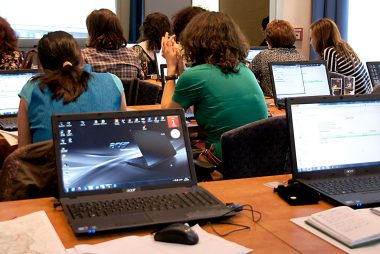 Blended learning is a well-established teaching and learning approach – but not in all educational fields.
Blended learning is a well-established teaching and learning approach – but not in all educational fields.
In school education (in the USA) approx 50 % of the K12 learners are currently taught with blended learning. At universities, blended learning is well used. In adult education, blended learning does not play a so important role. Here the onsite teaching is currently well established.
In VET distance learning on one hand did increase as a technology enhanced training. On the other hand, te results were not so satisfying as expected. The reason cannot be found so easily. Here are some facts (collected during the BladEdu project and researched in the preparation time for the TIBL project):
- VET Learners sometimes feel got lost in pure distance learning.
- The results are not like expected because often motivation and the necessary user tracking is missing.
- Often digital competences are missing.
- Trainers in VET education often are no teachers but people well experienced in the taught subjects or context. The missing experience in teaching sometimes leads to missing success of the learners.
- … and more others
Blended learning offers the advantages of onsite teahing with distance learning.
For blended learning – especially in small and media enterprises, some obstacles provide efficient and high quality. This is the missing education of trainers, the lck of high quality learning platforms, the approach to course creation, lack of knowledge and experience of the use of multimedia and interactivity in corses, and some more items.
It’s necessary to care for clear concepts in blended learning, develop an appropriate training method (like a well-fitting pedagogy in school education), to supply the trainers with proven end evaluated material and strategies to create and perform blended learning courses.
The engagement in the TIBL project will create the necessary outputs to fill the identified gaps in the landscape of blended learning for VET (and C-VET, continuous vocational education and training).

